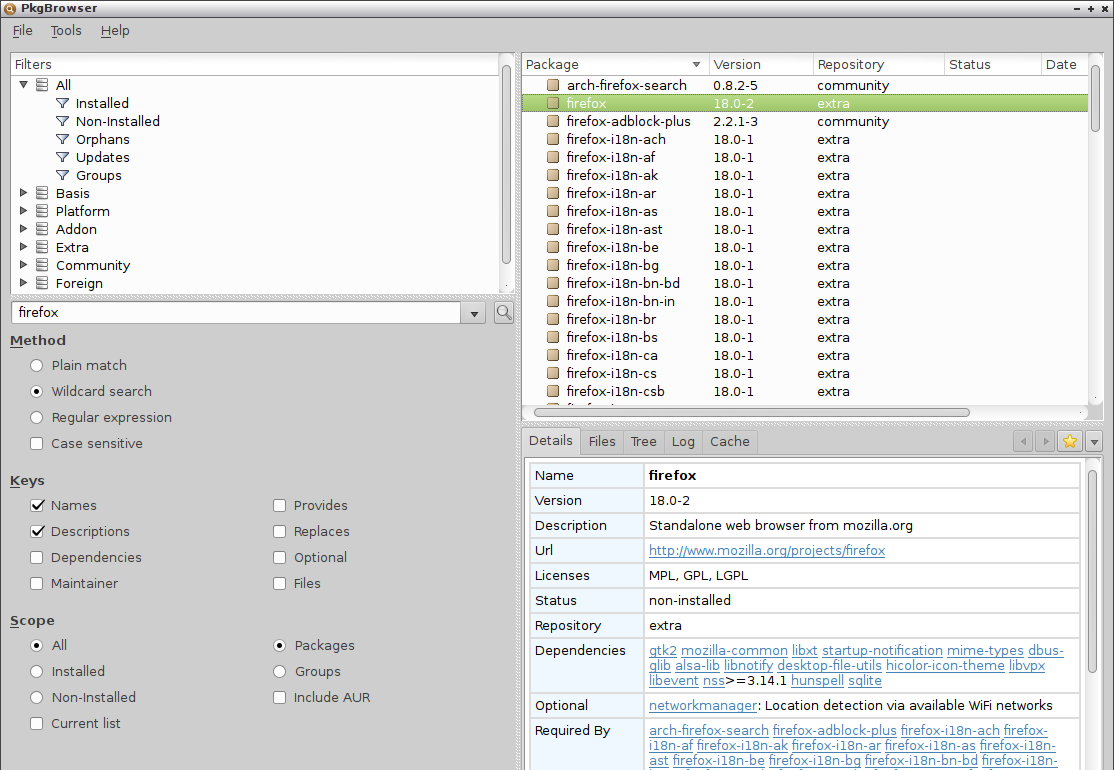Introduction
I like lightweight Linux distributions. For me an operating system should sit in the background and make it as easy as possible to do what it is I want to do.I don't need flashy cubes which make you go "ooh" or hotspots and gestures which make you go "aah".
Last week I wrote a review of Manjaro and for me the whole experience was brilliant. The system was highly responsive despite being an older laptop with fairly low specifications. The navigation system was great. For more experienced Linux users who are happy to see a terminal screen every now and then Manjaro is perfect.
This week's review is about Linux Lite which falls into the same lightweight category as distributions such as Zorin OS Lite, Peppermint Linux and Xubuntu.
So what is the purpose of Linux Lite. The following quote comes from the original distribution release notes.
"This distro was created for three reasons. One, to show people just how easy it can be to use a Linux-based operating system and to dispel myths about how scary Linux operating systems are. Two, to help create awareness about Linux-based operating systems. And three, to help promote this community. Linux Lite is free for everyone to use and share, and suitable for people who are new to Linux or for people who want a lightweight environment that is also fully functional."From the above statement you can assume two things:
- Linux Lite is easy to use
- Linux Lite should work on older hardware and is not resource intensive
Installation
Linux Lite can be downloaded from sourceforge.net/projects/linuxlite/files/. If your internet connection is slow or you have a download limit you can also buy a Linux Lite DVD from .Once downloaded you can use unetbootin to install the ISO to a USB drive or you can use any disc burning software to burn the image to a DVD.
When you insert the USB drive or DVD you will be able to boot to either a live environment or install directly to the hard drive. I always try the live version out first to make sure there aren't any obvious show stoppers.
Linux Lite runs very well in a live environment and I was able to get online and test the software that was loaded as part of the live install.
I don't however tend to do reviews in a live environment. I prefer to install the operating system to the hard drive. On the desktop there is an icon called "Install". Clicking this icon brings up the Ubiquity installer which is common amongst Ubuntu based distributions.
The installer is easy to follow.
The first thing to do is choose whether you want to install Linux Lite over any existing operating system (IE use the whole disk) or alongside an existing operating system.
Now choose whether you want to download updates as you go and whether you want third party software installed. The third party software enables you to watch flash videos and listen to MP3s.
When you click next to install the files start copying from the DVD or USB drive and you can get on with choosing the username you wish to use to log in to Linux Lite and the locale and timezone.
Depending whether you choose to install updates or not the installation time is about 15 minutes. If you choose to download updates then it depends on your internet connection how long the updates take.
When everything is installed you are able to continue using the live environment or you can reboot the computer into the newly installed Linux Lite operating system.
First Impressions
Linux Lite loads into a black background with the Linux Lite logo. There is a taskbar as the bottom with a menu, launch bar and system tray.
I once tried Crunchbang and I have deliberately not written a review of it because my mind hasn't worked its way past the scarily black background which says more about my psychy than it does about Crunchbang. I do plan to review Crunchbang properly in the future.
The black background for Linux Lite is broken up by the logo which makes it look smart and professional.
The taskbar has a menu icon, three icons in the quick launch section which are Firefox, Thunar file manager and Terminal. The system tray has an icon for virtual workspaces, a network icon, a battery icon and a clock.
The desktop environment for Linux Lite is XFCE. If you don't like the look and feel of Linux Lite you can always follow this tutorial to customise the XFCE desktop.
Windows users will feel somewhat familiar with the Linux Lite system. Everything is pretty much in the same place for Linux Lite as it is for Windows. Zorin OS and Linux Mint with the Cinnamon desktop also provide a familiar look and feel for Windows users.
Connecting to the internet
To connect to the internet click the network icon in the system tray. (looks like 2 monitors). Alternatively click the Menu icon and select Internet -> Network Manager.The Wicd Network Manager application will appear with a list of all available wireless networks.
If your wireless requires an encryption key then you will need to click the properties button next to the network you wish to connect to.
The Wicd application is fairly smart and should pick the correct encryption method for your network.
All you need to do is enter the encryption key into the Key field.
Now at this point I want to mention something that happened to me. It might be local to my particular laptop which is a Samsung R20 but it might also be a problem on other Samsung computers or indeed other makes and models.
It is worth checking the box next to the Key field to see what is actually being entered into the Key field as opposed to showing asterisks (*). The reason I say this is that certain characters on my keyboard showed up as different characters. For example the 0 key became a forward slash (/).
To get around this all I had to do was to press the FN key and F11. This key sequence may be different for other makes and models. You are basically looking for the function lock.
When you have correctly entered the security key click OK to return to the main WICD screen and press connect to connect to the network. You can also check the automatically connect to this network checkbox if you always want to connect to the same network.
The default browser installed with Linux Lite is Firefox.
Installing Software
To install software click Menu -> Settings -> Install/Remove software. The Synaptic package manager loads and you are able to search for software to install.
Within Synaptic to install software you first mark the software for installation and then click apply to actually install it. This means you can mark multiple applications for installation and then install them all at once. You will also be told of any libraries or applications that your chosen applications depend on.
As well as Synaptic, Linux Lite also provides a menu to install more common applications.
To access the list click the menu icon and then Install Additional Software.
You can now install a calculator, file and folder search, instant messenging, remote desktop, restricted extras, torrent software, video editing, virtualbox, weather monitor and/or Wine.
The restricted extras package includes proprietary libraries and applications which enable the use of Truetype Fonts, Java, Flash and the ability to playback MP3s.
If you chose the install third party software option when installing Linux Lite you might not need to install the restricted extras package but if you find Flash and MP3 playback doesn't work then installing the restricted extras package will fix this.
Installing Virtualbox enables you to install other operating systems in virtual machines.
Installing Wine enables you to run Windows programs within Linux Lite.
Flash and MP3
I didn't check the install third party files option when installing Linux Lite so I went straight for the restricted extras package.
After installing the restricted extras package I was able to watch Eden Hazard's assault of a ball boy during the league cup semi-final on Wednesday night.
For listening to MP3s I noticed a glaring exclusion in the list of pre-installed applications. There isn't a music player installed. (Although VLC is available).
To get around this problem I installed Guayadeque which I have to say has grown on me as an application in the last month as I use this as my default music player on the Raspberry PI.
The MP3s on my computer played back perfectly with no GStreamer errors which is normally the case when MP3 codecs aren't installed.
Customising the desktop
To change the background right click on the desktop and choose desktop settings.A settings window will open and you can choose to change the background to one of the pre-installed backgrounds or you can choose one that you downloaded.
There you have it, something a little more colourful although still a bit drab. If you don't like that one there is actually a really nice set of images provided with Linux Lite as the next image shows.
Applications
Accessories
- Application Finder - Makes it easy to find applications
- Screenshot - Screenshot capturing
- Task Manager - Task Manager similar to the one in Windows
- Terminal - Terminal
- Leafpad - Text Editor
- XArchiver - File Compression
Games
- Steam
- Link to buy Humble Bundle games
Graphics
- GIMP - Image Editor
- Ristretto - Image Viewer
Internet
- Firefox - Web Browser
- Mumble - Voice Chat
- Thunderbird - Email Client (Similar to Outlook)
- Network Manager - Set up wireless connections
- XChat - IRC Chat
Multimedia
- Xfburn - CD/DVD burning
- Audio Mixer - ALSA audio mixer
- PulseAudio Volume Control - PulseAudio volume control
- VLC Media Player - Video player
Office
- LibreOffice Write - Word Processor
- LibreOffice Calc - Spreadsheet
- LibreOffice Impress - Presentation
- PDF Viewer - PDF Viewer
Summary
At the beginning of the article I made mention of the fact that Linux Lite is supposed to be easy to use and lightweight in nature.If you are coming from a Windows environment you will feel instantly familiar with Linux Lite and it will certainly breed new life into older hardware.
Connecting to the internet is easy and Firefox is an adequate web browser although not as good as Chromium (in my opinion).
By default you will have most of the applications installed that you need for common activities including LibreOffice and GIMP. There is also a quick access list to install other applications. Synaptic is also a very good tool for searching and installing applications from the Ubuntu repositories.
The list of installed applications is a bit eclectic. I wouldn't particularly say any of them are lightweight so really the only lightweight part of the system is the use of XFCE. There is also the glaring lack of an audio package.
Linux Lite is very responsive. The boot times are good and I feel very comfortable using Linux Lite in the same way I feel comfortable using Zorin OS Lite or Peppermint OS.
I also have to mention that Linux Lite is very stable. No crashes and no real issues have been encountered thus far and I have been using Linux Lite for a week.
All in all Linux Lite is still in its infancy at version 1.0.4 so its true place on the Linux landscape has yet to be determined but it is has a good starting point to build from.
Thankyou for reading.
Click here to download Linux Lite
To make it easier for everyone who wants to read my Ubuntu based articles and tutorials I have formatted them, rewritten them and added extra content which has resulted in the eBook "From Windows To Ubuntu".
The book isn't massive like a SAMS guide so it isn't going to take you forever to read it but there is certainly a lot of content.























































